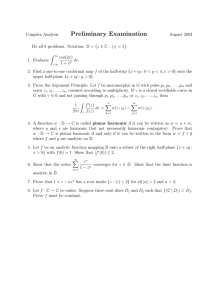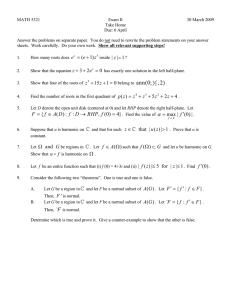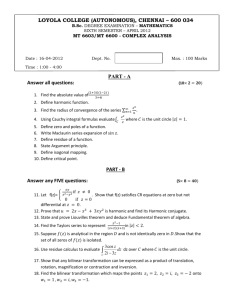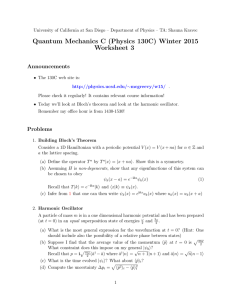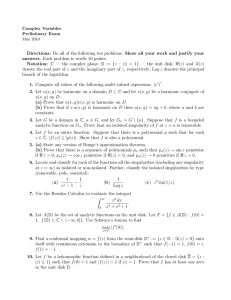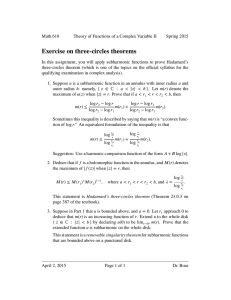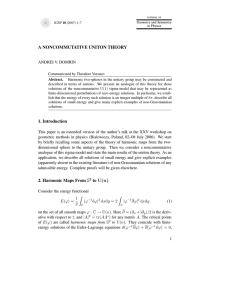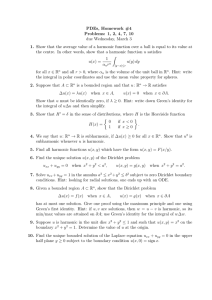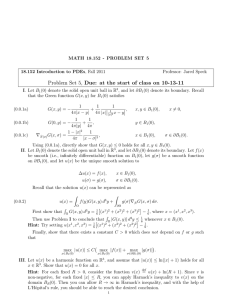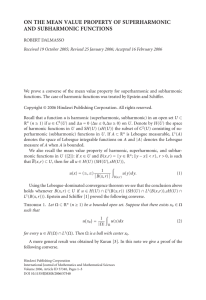MATH 5321 Exam II April 7, 2005 Take Home
advertisement
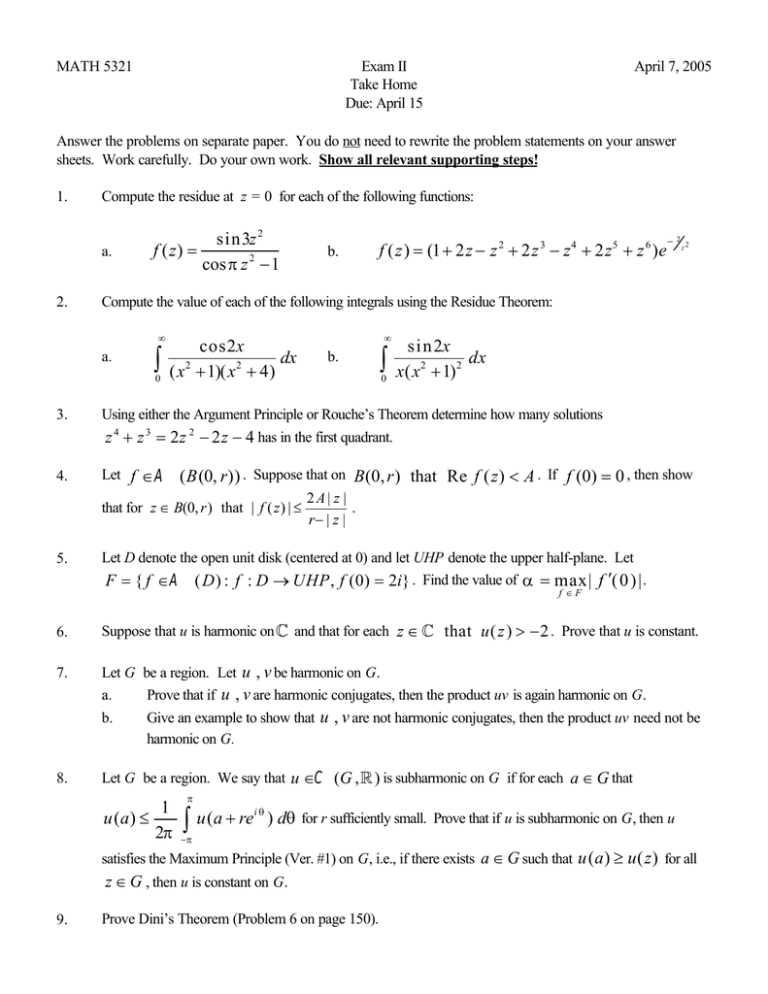
MATH 5321
Exam II
Take Home
Due: April 15
April 7, 2005
Answer the problems on separate paper. You do not need to rewrite the problem statements on your answer
sheets. Work carefully. Do your own work. Show all relevant supporting steps!
1.
Compute the residue at z = 0 for each of the following functions:
a.
2.
sin3z 2
f ( z) =
cos π z 2 − 1
b.
f ( z ) = (1 + 2 z − z 2 + 2 z 3 − z 4 + 2 z 5 + z 6 ) e
−
2
z2
Compute the value of each of the following integrals using the Residue Theorem:
∞
a.
∫
0
cos2x
dx
2
( x + 1)( x 2 + 4)
∞
b.
∫
0
sin2x
dx
x ( x 2 + 1) 2
3.
Using either the Argument Principle or Rouche’s Theorem determine how many solutions
z 4 + z 3 = 2z 2 − 2 z − 4 has in the first quadrant.
4.
Let f ∈A ( B (0, r )) . Suppose that on B (0, r ) that Re f ( z ) < A . If f (0) = 0 , then show
2A| z |
that for z ∈ B(0, r ) that | f ( z ) | ≤
.
r− | z |
5.
Let D denote the open unit disk (centered at 0) and let UHP denote the upper half-plane. Let
F = { f ∈A ( D ) : f : D → UHP , f (0) = 2i} . Find the value of α = max| f ′( 0 ) | .
f ∈F
6.
7.
8.
Suppose that u is harmonic on £ and that for each z ∈ £ that u ( z ) > − 2 . Prove that u is constant.
Let G be a region. Let u , v be harmonic on G.
a.
Prove that if u , v are harmonic conjugates, then the product uv is again harmonic on G.
b.
Give an example to show that u , v are not harmonic conjugates, then the product uv need not be
harmonic on G.
Let G be a region. We say that u ∈C (G , ¡ ) is subharmonic on G if for each a ∈ G that
1
u ( a) ≤
2π
π
∫ u (a + re
iθ
) dθ for r sufficiently small. Prove that if u is subharmonic on G, then u
−π
satisfies the Maximum Principle (Ver. #1) on G, i.e., if there exists a ∈ G such that u ( a ) ≥ u ( z ) for all
z ∈ G , then u is constant on G.
9.
Prove Dini’s Theorem (Problem 6 on page 150).
